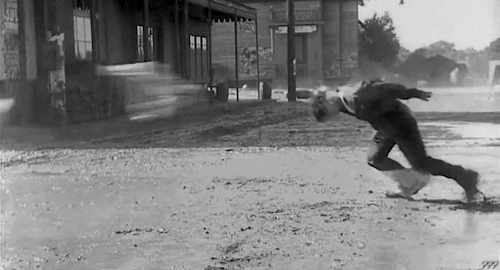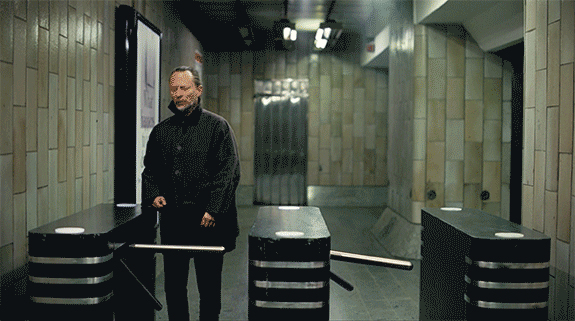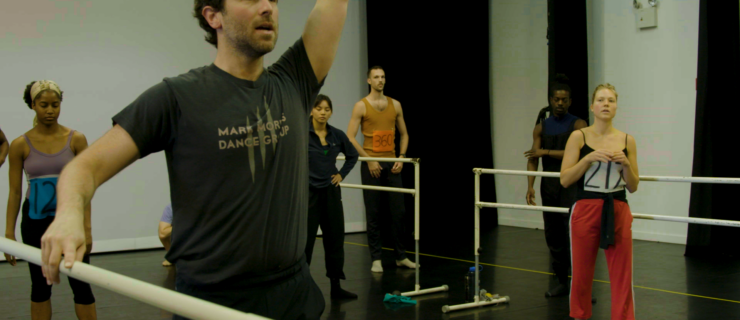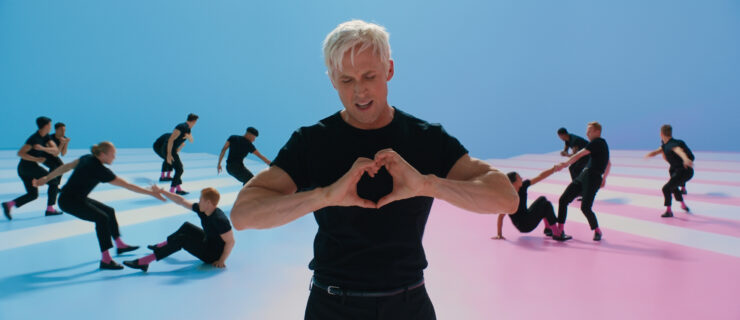Thom Yorke Channels Buster Keaton in New Dance Film Anima, Now on Netflix
Tunneling through the labyrinth of Prague’s underground transport system, a subway car is packed full of dreamy-eyed commuters. Drifting between states of sleep and consciousness, the somber-clad workers perform a mechanical dance of nodding heads and drooping shoulders.
Radiohead frontman Thom Yorke, who executes the same choreography as his fellow travelers, struggles to make a connection with a female passenger danced by Dajana Roncione (Yorke’s partner in real life).
The opening images of the new short film Anima, now on Netflix, are playful yet dystopian, accompanied by a soundtrack of electro beats and Yorke’s dronelike vocals that are sourced from three songs on his latest solo album of the same name. But there are no vain attempts to link the singer to his music by mouthing the words on camera. Instead, he portrays an unnamed protagonist in a loosely woven narrative performed through dance.
Inspired by silent cinema, Anima recalls an era when screen actors were strongly encouraged to hone their dance skills for stories told through the body.
Yorke is no stranger to dancing on screen. His previous collaborators include Britain’s Wayne McGregor, who crafted the singer’s moves for music videos “Lotus Flower” and “Ingenue.”
After meeting Franco-Belgian choreographer Damien Jalet on the set of the horror remake Suspiria, Yorke invited the dance artist to create 15 minutes of uninterrupted choreography for Anima. Paul Thomas Anderson (Inherent Vice, Boogie Nights), who has made music videos with Yorke in the past, signed on to direct.
There is no shortage of media buzz surrounding the film. Some reviews laud its originality, others dismiss it as a glorified music video. In both cases, most film and music critics seem oblivious to the fact that dance film is currently a robust area of creative exploration, with origins that date back to cinema’s invention at the end of the 19th century.
Not only did dance feature prominently in the first films screened on both sides of the Atlantic, many of the industry’s early stars are remembered for their signature moves. Think Charlie Chaplin‘s iconic walk or Buster Keaton‘s acrobatic falls. These performers, although long gone, continue to garner sympathy and inspire fits of laughter today.
While on set, Anderson was often heard yelling “More Keaton!” He wanted Yorke to channel the comedian, who mastered the art of physical timing on vaudeville before breaking into motion pictures.
While Yorke is known for his angsty musical performances, audiences may be surprised to see the emotional range and ease of motion that the singer brings to Anima as its light-hearted romantic hero.
Taking another page from the silent cinema playbook, Jalet’s site-specific choreography transforms simple objects and everyday actions into humorous choreographic material. When Yorke’s character notices that his fellow passenger has left her lunch box behind, he attempts to catch up with her and return it. The effort fails due to an uncooperative subway turnstile. Unlike the other travelers who glide through the barrier with ease, Yorke is forced to take extreme measures by leaping over the turnstile headfirst.
There’s a famous moment in Steamboat Bill (1928) when Bustor Keaton is caught in a wind storm and his body is tilted at an extreme angle while moving through space. This same slanted diagonal is echoed in Anima when Yorke and the cast dance atop a large slope, bodies advancing at gravity-defying angles.
 Steamboat Bill
Steamboat Bill
Just like Keaton, Yorke performs these scenes with a deadpan expression, a naivety that inspires laughter, but not of the mean-spirited variety. All the humorous hardships that we witness result in feelings of satisfaction when Yorke and Roncione finally connect on the streets of Prague at night. In a final pas de deux, the pair fold in and out of each another’s arms while traveling forward. When Yorke wakes up alone moments later, it is all the more bittersweet.
This is the enduring charm of silent movies. Movement is imbued with meaning but remains universal. In a film industry that has steadily become more language driven over the years, dance films and silent cinema’s legacy offer an alternative with international appeal.




